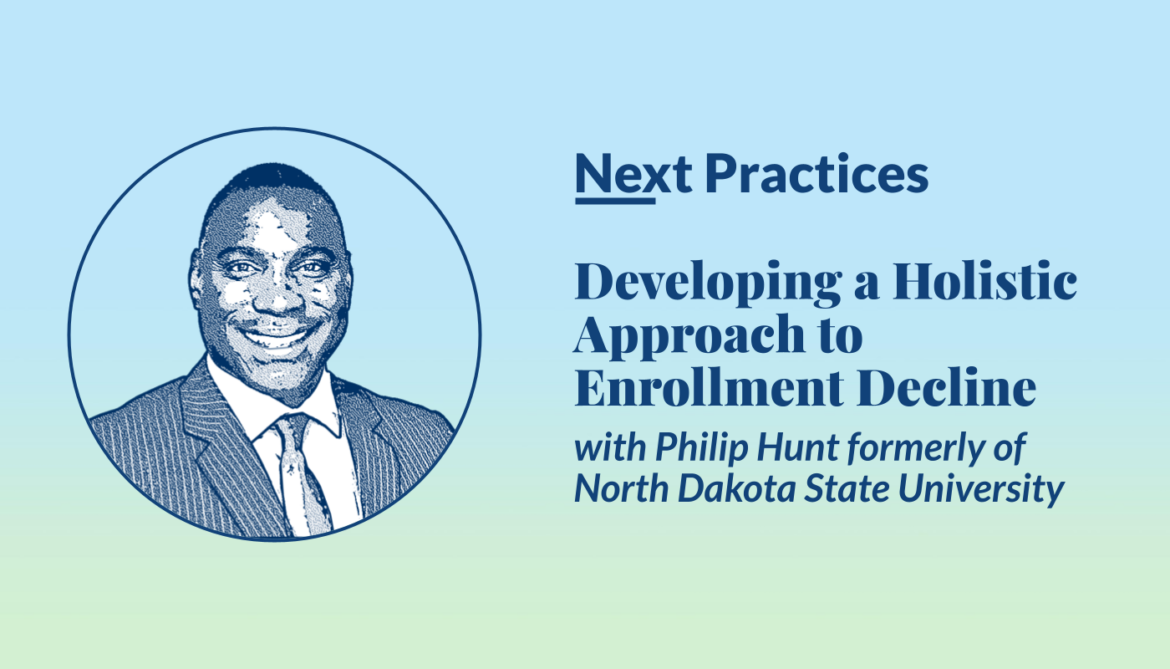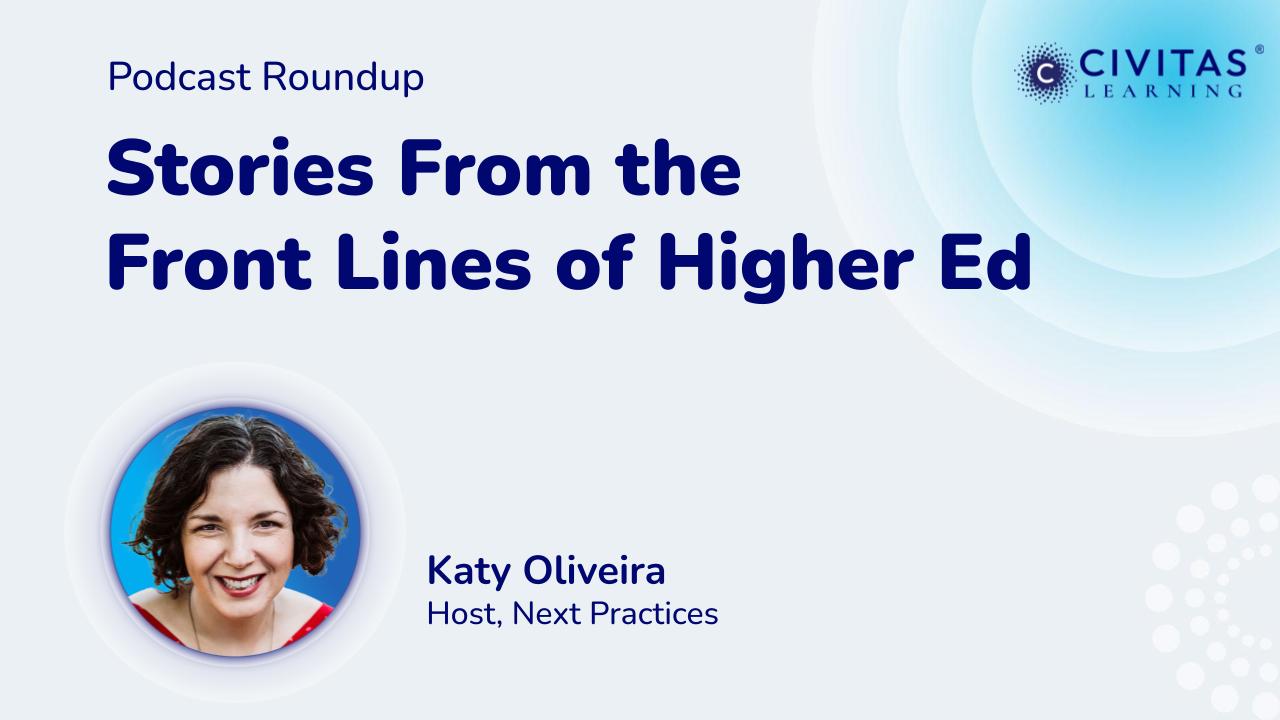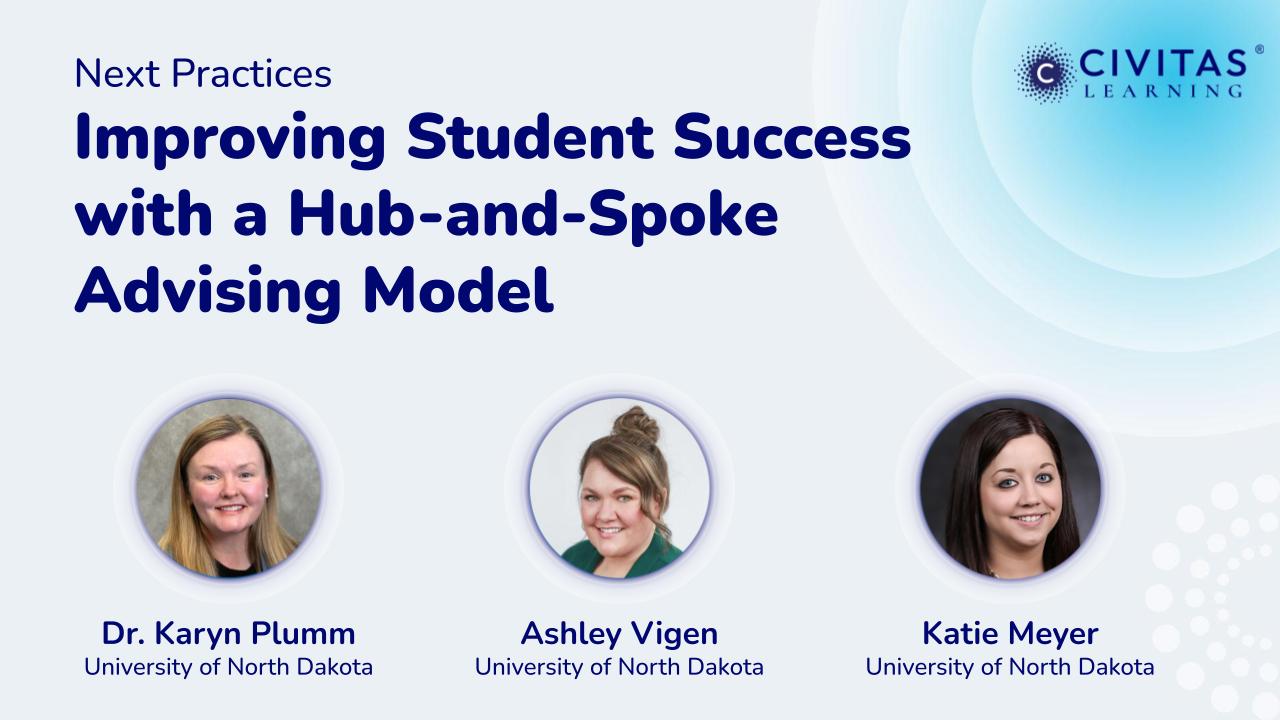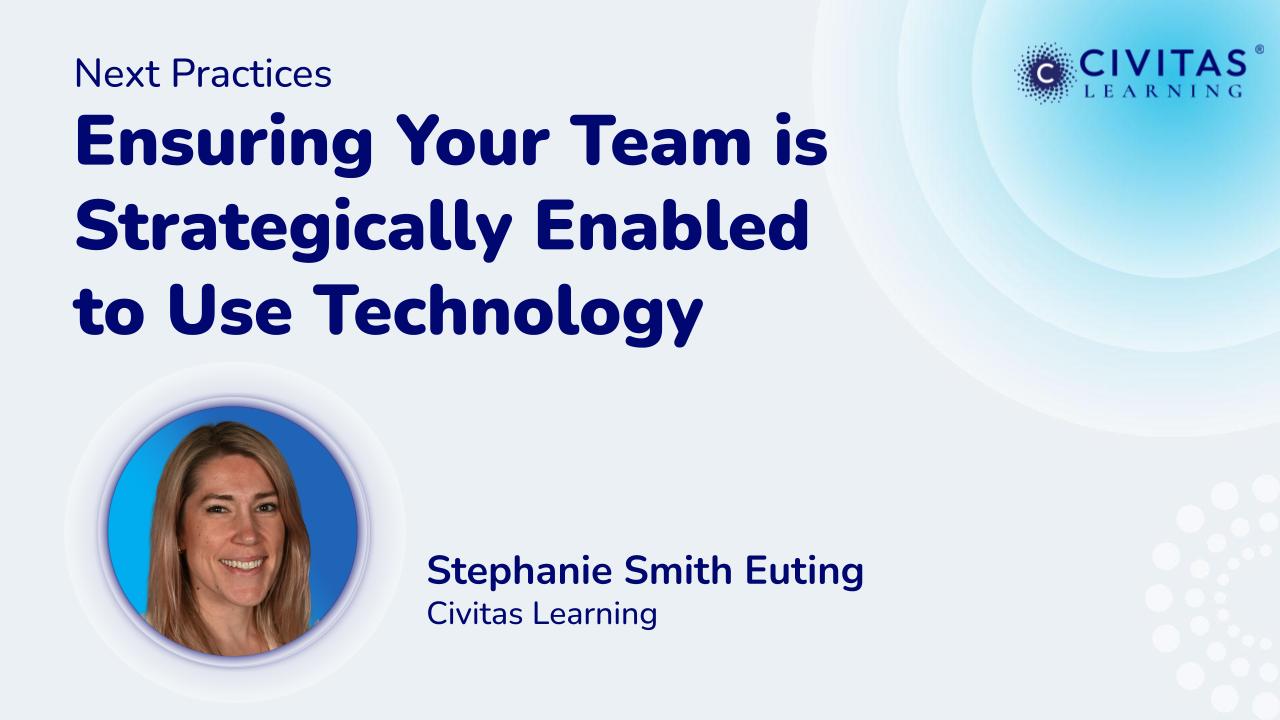
Developing a Proactive Response to Enrollment Decline with Philip Hunt
Share this Post
Subscribe: Spotify | Apple Podcasts | Youtube Music | Full Transcript
As colleges and universities strive for higher enrollment, educational leaders are implementing proactive strategies to attract new students and help them persist and graduate. Philip Hunt, formerly the Special Assistant to the President and University Registrar at North Dakota State University (NDSU), believes that enrollment is much more than recruitment–it’s about preventing students from falling through the cracks. To amp up their retention efforts, NDSU leaders developed an enrollment and retention framework focusing on student success, from recruitment to graduation.
In a conversation with Philip Hunt on Next Practices, we discuss how NDSU transforms students’ outcomes through technology, cross-functional partnerships, and data-informed actions.
Develop a framework for student success
Although NDSU leaders have always been committed to student success, it wasn’t until launching a strategic student success plan a few years ago that they started seeing noticeable changes among students and staff. Once they defined what student success looked like at their institution and developed a tangible structure around supporting their student success goals, different departments could use that framework to cooperate.
Implement supportive technology tools
When NDSU started its student success journey a few years ago, it knew it needed to solidify a strategy and develop a framework for retention. As part of this effort, NDSU partnered with Civitas Learning to utilize a comprehensive student success and analytics tool to help it put its strategies into practice.
With the help of this tool and collaboration with the Civitas Learning team, NDSU has started to uncover new questions to guide its work and fresh opportunities to boost its retention efforts. How can we improve advising? How easy is it for students to get through their curriculum? What do persistence rates look like? Guided by these questions, NDSU leaders developed a student course section satisfaction survey to help them determine when and where they were losing students and then adjust those problem areas.
Redesign student-centered course planning and advising
With countless options for improving student success, NDSU decided to focus on the handful of initiatives that yielded the biggest return on their investment. One of these initiatives involved revamping their advising model to be more proactive and student-centered. With the help of the Civitas Learning case management capabilities, the staff identified barriers to successful advising and made strategic adjustments to benefit students. Even in the beginning stages of this new advising model, NDSU saw a 2% increase in retention in just one semester.
They also started looking more intentionally at the course scheduling data to see which changes could improve course access. After analyzing student feedback, they identified students’ preferred courses, days, times, and classroom formats (in-person or online). Once they saw which courses were in high demand, they could identify opportunities to increase faculty and resources in those areas.
Collaborate with institutional research
Many of the student success initiatives at NDSU have developed due to meaningful questions on how students interact broadly with academics and their institution. The Office of Institutional Research has been vital in providing answers to those questions by setting up dashboards, analyzing student data, and collaborating with other departments. Bringing together insights from across the institution into the Civitas Learning platform equips NDSU staff to see what’s happening for their students in real-time. Instead of allowing anecdotes and disorganized data to drive the bulk of their strategic changes, they use technology and departmental collaboration to make data-informed decisions.
Be proactive with students and staff
One of the most impactful changes at NDSU has been the rollout of their proactive advising model, where advisors reach out to students regularly to deliver the help they need. Hunt emphasizes that this proactivity applies not only to advising but to every department that supports students. Since prioritizing proactivity with their students, teams are more willing to coordinate their efforts with other faculty and staff across campus. Not only does this streamline their workflow, it also lays the groundwork for more constructive conversations and problem-solving.
To learn more about the positive student success outcomes at NDSU and what they’re planning for the future, listen to the full conversation on Next Practices.



